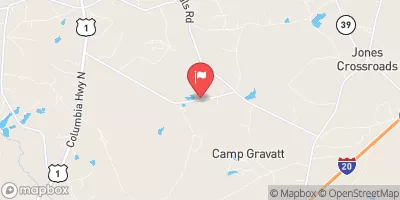Summary
The lake has an abundance of fish species including largemouth bass, crappie, bluegill, and catfish. The lake is surrounded by beautiful scenery and offers various nearby activities such as hiking, camping, and picnicking.
For the best fishing experience, it is recommended to use a variety of baits including live worms, minnows, and artificial lures. Anglers should focus their efforts on the deeper parts of the lake where most fish tend to congregate. Fishing during early morning and late afternoon has been known to yield the best results.
The best time to visit Lick Fork Lake for fishing is during the spring and fall seasons when the temperatures are mild, and the fish are most active. The average temperature during spring is around 60°F to 80°F, while in the fall, it is around 50°F to 70°F.
Aside from fishing, visitors can enjoy other outdoor activities such as hiking on the nearby trails, camping at the campgrounds, or having a picnic with family and friends. The lake is surrounded by beautiful scenery and provides an excellent opportunity to relax and unwind.
In conclusion, Lick Fork Lake is a great fishing destination in South Carolina that offers a variety of fish species and recreational activities. It is recommended to visit during the spring and fall seasons when the temperatures are mild, and the fish are most active. With some patience and the right fishing gear, anglers can have a successful day on the water.
Weather Forecast
Nearby Streamflow Levels
 Stevens Creek Near Modoc
Stevens Creek Near Modoc
|
56cfs |
 Augusta Canal Nr Augusta (Upper)
Augusta Canal Nr Augusta (Upper)
|
1810cfs |
 Butler Creek Below 7th Avenue
Butler Creek Below 7th Avenue
|
8cfs |
 Spirit Creek At Us 1
Spirit Creek At Us 1
|
13cfs |
 Savannah River At Augusta
Savannah River At Augusta
|
4490cfs |
 Mctier Creek (Rd 209) Near Monetta
Mctier Creek (Rd 209) Near Monetta
|
9cfs |
Angling Safety Guidelines
Check local fishing rules, seasons, size limits, and license requirements to ensure legal and sustainable angling.
Handle Fish Responsibly
Use wet hands, minimize air exposure, and release fish gently to improve survival rates when practicing catch-and-release.
Choose the Right Gear
Match your rod, line, and tackle to the species and conditions to increase success and reduce unnecessary harm to fish.
Respect the Waterway
Avoid disturbing habitat, prevent bank erosion, and keep a safe distance from spawning areas to protect ecosystems.
Keep It Clean
Pack out all line, hooks, bait containers, and trash—discarded gear can injure wildlife and degrade waterways.
Related Links
Area Campgrounds
| Location | Reservations | Toilets |
|---|---|---|
 Lick Fork Lake Recreation Area
Lick Fork Lake Recreation Area
|
||
 Lick Fork Lake
Lick Fork Lake
|
||
 Hamilton Branch State Park
Hamilton Branch State Park
|
||
 Modoc - Strom Thurmond Lake
Modoc - Strom Thurmond Lake
|

 Lick Fork Lake Dam
Lick Fork Lake Dam
 Saint John's Road, Clarks Hill
Saint John's Road, Clarks Hill
 Courthouse Square
Courthouse Square
 Edgefield Park
Edgefield Park
 Hamilton Branch State Park
Hamilton Branch State Park
 Walnut Lane Neighborhood Park
Walnut Lane Neighborhood Park